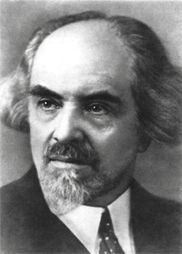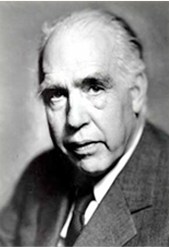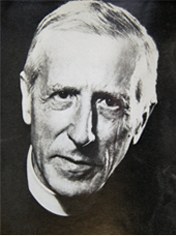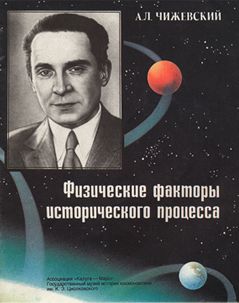The Spiritual Revolution of the 20th century, in which the new mentality of cosmic world perception was formed, showed a certain tendency for the synthesis of scientific and extra-scientific methods of cognition, which had, undoubtedly, evolutionary character. This tendency got its best expression in the studies of the Silver Age philosophers, closely related to the problems of the cultural and spiritual evolution of mankind.
These philosophers included such high intellects as P. Florensky, S. Bulgakov, N. Berdiayev, I. Ilyin, V. Soloviev, and others. In their studies we find religious, philosophic, and scientific thought: “Readings about God-Mankind” and “The Justification of the Good: Moral Philosophy” by V. Soloviev; “The Philosophy of Freedom,” “The Essence of Creation,” “The Fate of Russia,” “Creation and Objectification,” and “The Kingdom of the Spirit and the Kingdom of Caesar” by N. Berdiayev; “The Pillar and the Ground of Truth,” “Imaginaries in Geometry,” “Reverse Perspective,” and “Universal Human Roots of Idealism” by P. Florensky; “The Non-Evening Light” and “Two Cities” by S. Bulgakov; “The Way to Obviousness” by I. Ilyin. These and other studies of the Silver Age philosophers were distinctively original, they did not, as traditional, imitate Western schools. Leaving aside minor political issues and questions of routine being, the Russian philosophers placed man, the distinctive features of his spirit, his evolutionary fate, and the role of the Higher at the center of their studies. The old sociological thinking with its traditional approaches could not answer many questions set before Russia and the world by events of cosmic scale. The Russian thinkers intuitively sensed those energetic changes, which the evolution of the Cosmos and man carried in itself in the 20th century. They, those thinkers, according to N. Berdiayev, passed into “another ideological dimension,” seeing the energetic integrity of the Universe and its inalienable connection with the existence of man.
The scientific explosion of the 1920s to a considerable extent contributed to the development of this process. The natural sciences, primarily physics, found themselves in a critical situation in terms of methodology. Under the set circumstances of an experiment, matter started behaving in unpredictable ways. The indivisible became divisible, in invisible spaces was discovered intensive energetic activity, “pure” experiments in atomic physics began to be influenced by the subtle energetics of the experimenter himself, and some “immaterial” structures and particles appeared in matter. The new mentality, formed in the Spiritual Revolution, set forth new tasks before scientific thought, the solutions of which were undertaken by outstanding scientists. The accumulations of human knowledge’s extra-scientific spheres became demanded again. The studies by great scientists, such as V. Vernadsky, K. Tsiolkovsky, A. Chizhevsky, P. Teyar de Chardin, N. Bohr, and A. Einstein, combined science and non-science. An integral approach towards the phenomena of nature and human society was formed in such studies. Scientists turned to the forgotten ideas of ancient sages about the close interaction of man, the planet, and the Cosmos and about the fundamental unity of macro- and microcosm. These thoughts were confirmed in scientific discoveries. The speculative philosophy of the East contributed especially much to the comprehension of the new insights of science. The new cosmic world perception introduced into science the category of the spirit, brought scientists closer to the idea of the existence of other states of matter, and led them to seek experimental confirmation of such existence.
It seemed that the sharp borderlines between scientific and extra-scientific methods started to blur, directing the flow of scientific thought to the synthesis of various phenomena of planetary and cosmic character. V. Vernadsky’s theories of the biosphere and the noosphere, which he formulated in his unique study “Scientific Thought as a Planetary Phenomenon,” were one of the first scientific results of the new cosmic thinking at the level of “evolution which has become aware of itself” (P. Teyar de Chardin). The noosphere, or the sphere of the intellect, the next, higher stage in the development of the Earth’s biosphere, is the result, the scientist asserted, of man’s conscious thinking activity. In the same years, A. Chizhevsky wrote about the necessity of a new science: “more modern than the contemporary one, more tolerant to the new ideas and new achievements of the human genius.”[1, p.116]. The man of genius K. Tsiolkovsky wrote and spoke in provincial Kaluga about the spiritual Cosmos, about the rational powers in it, about the irresistible will of the Universe, and about a hierarchy of highly developed entities. “The will of man,” he stated, “and of all other creatures, higher and lower, is just a manifestation of the will of the Universe. The voice of man, his thoughts, discoveries, notions, beliefs, and mistakes, is just the voice of the Universe.”[2, p.14].
A. Chizhevsky experimentally discovered the interaction of the human organism and human society with the Sun’s activity and, in particular, with the rhythm of sunspots. Proceeding from the concept of the unity of man and Cosmos, the interaction of man and the Sun, he perceived certain cycles and rhythms of the Sun’s impact on health, the public activities of man, and the historical process. These studies broke the borders between the natural and humanitarian sciences, leaving causal priorities to the natural ones. In his studies, the scientist wrote about the great electromagnetic life of the Universe, laying the first bricks in the foundation of the energetic world outlook of the 20th century. Combining his unusual studies, Chezhevsky advanced more and more in his cosmic search. “It should be concluded from the above stated that there is some unearthly power affecting from the outside the development of events in human communities. The simultaneous character of the fluctuations of solar and human activity serves as the best indication of this power.”[3, p.52]. Many scientific discoveries of the 20th century were directly related to extra-scientific information, concerning, first of all, the problems of space, which, in fact, contain the main secrets of the universe. The first steps in this direction were made as long ago as in the 19th century by Russian scientist N. Lobachevsky, who elaborated the theory of non-Euclidean geometry that overthrew all understanding of the very nature of space. Beyond the mechanistically material world, something unavailable to common vision, but nevertheless really existing, yielding to research, was seen. This invisible space was characterized by new dimensions, not yet accessible by the human mind, but the information about which came from the extra-scientific realm. In 1907-1908 the German scientist Minkovsky started speaking not of space as such, but of space-time, as an integral phenomenon. To the three space coordinates, he added a certain fourth coordinate, the temporal one. What appeared in the spiritual illuminations of non-science turned out to be the reality of the science of today. Albert Einstein’s theory of relativity established this coordinate as the fourth dimension. Taking into consideration that the velocity of light, 300,000 km/sec, has its material limits, Einstein closely approached the hypothesis of superlight-space existence. Gradually, through the discovery of invisible spaces and worlds, a real notion of the spirit and the anticpation of revolutionary changes was felt in science and its paradigm. Cosmic evolution demanded those thinkers and scientists who possessed an ability for synthesis. P. Florensky, as an outstanding scientist, a unique philosopher with an ability for producing evidence, and a priest, who well understood art as a most important method of cognition, was an example of such a man. Behind the presumably existing superlight space, Florensky saw other being, “the other world,” with all the features that were characteristic of it, but that were already yielding to scientific explanation. The so-called imaginary space, imaginaries in geometry, represent science’s contact with other worlds of different states of matter. Florensky’s studies, including “Imaginaries in Geometry,” “Iconostasis,” and “Reverse Perspective,” which he wrote in the first half of the 20th century, are highly important milestones along the path of the formation of cosmic thinking and a synthetic system of cognition. They contain proof of the existence of a different Universe, different worlds, inaccessible by our eye and our senses, but spiritually connected with us and influencing our world of solid matter. <...>
|
| ||||||||||||||||||||||||||||||
Copyright © 2008-2024 ST. PETERSBURG BRANCH OF THE INTERNATIONAL CENTER OF THE ROERICHS
Life and creative work of Nicholas Roerich | Exhibitions | Excursions | Scientific research | Protection of the Roerichs' name and heritage




